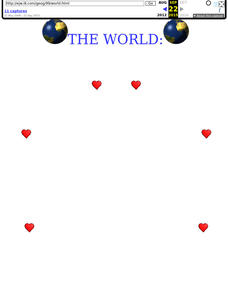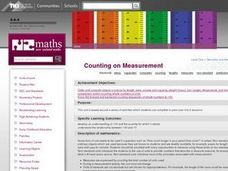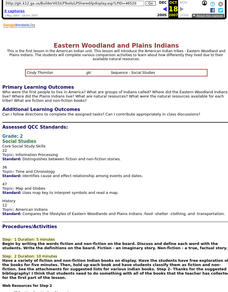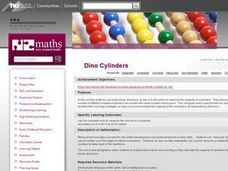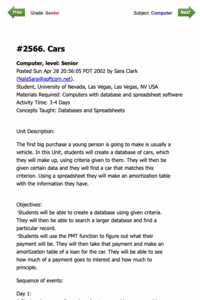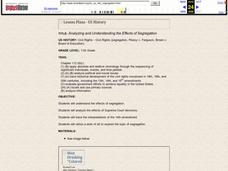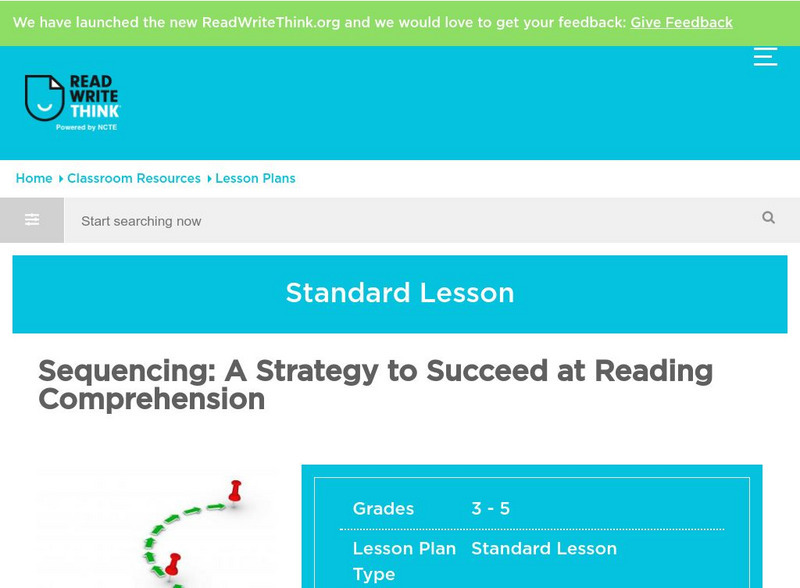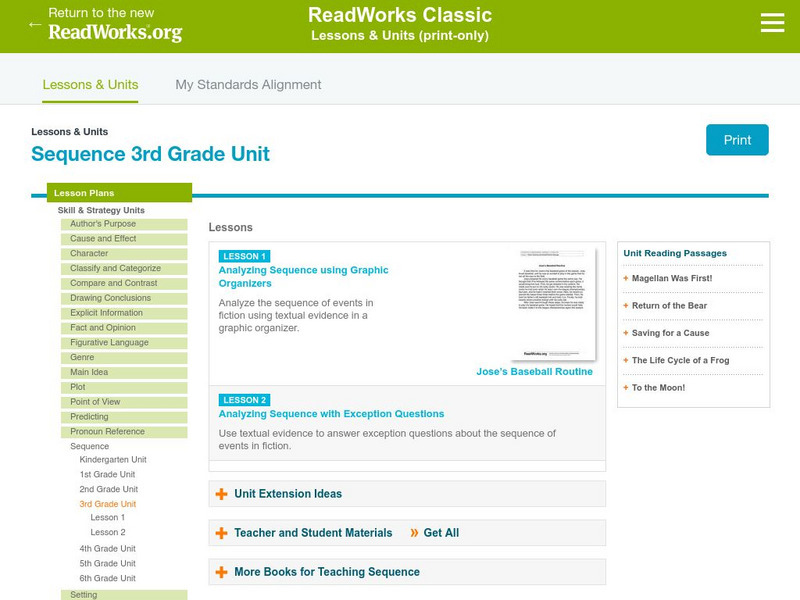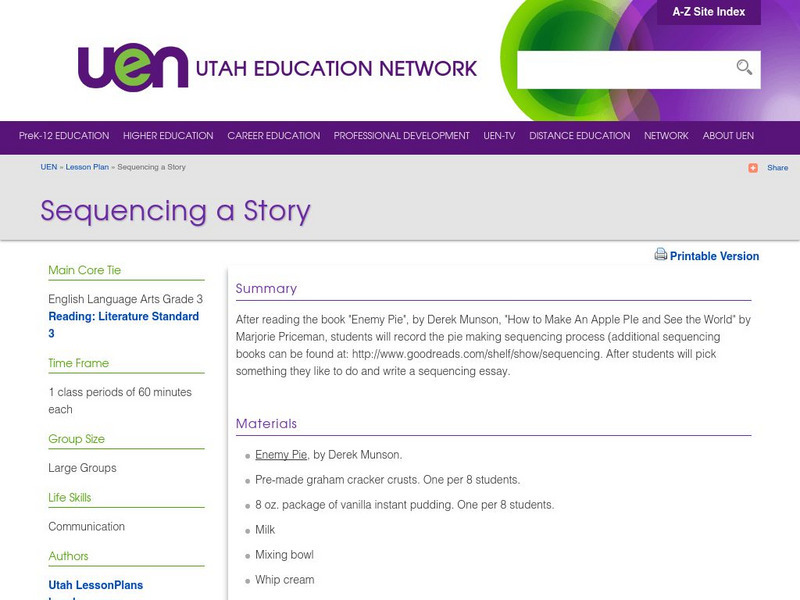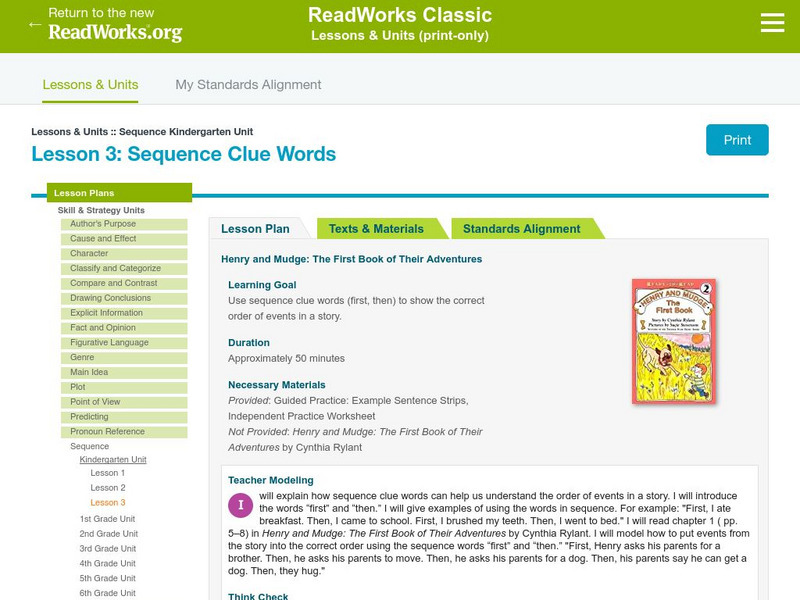Curated OER
The World (With an emphasis on the United States)
Fourth graders recognize the different continents. They are introduced to longitude and latitude and how to find locations using these measurements. This series ends with an emphasis on the fifty states of the United States and their...
Curated OER
Is It an Authentic Gutenberg Bible?
Sixth graders conduct Internet research to determine what makes Gutenberg Bible authentic, view Ransom Center's digitized version of Gutenberg Bible, and create Powerpoint presentation supporting research findings.
Curated OER
Counting on Measurement
First graders explore measurement. They measure by counting non-standard units. Students use a variety of non-standard units to predict and measure volume of various containers using rice.
Curated OER
Trains
Pupils compare the lengths of the train through calculation. This calculation can be done by knowing the values of the rods. Students use problem solving to get the answer to the problem before them.
Curated OER
Eastern Woodland and Plains Indians
Second graders are introduced to the American Indian tribes - Eastern Woodland and Plains Indians. They complete various comparison activities to explore how differently they lived.
Curated OER
Islam or Christianity?
Students design a mosaic depicting the city of Constantinople during determined periods of history. They include historical evidence that shows whether the city was under Muslim or Christian rule.
Curated OER
Dino Cylinders
Students investigate the capacity of containers using small dinosaur figures as the unit of measure. They work with a number of different shaped containers to compare the capacity as they practice counting the dinosaurs. They complete an...
Curated OER
Women Air Force Service Pilots
Tenth graders evaluate the contributions of female services pilots during World War II. They discuss the service of the women as well as the conditions they confronted. Students compare and contrast the treatment of male and female...
Curated OER
Systems and Control
Learners create a circuit board that demonstrates how a traffic light works. After writing a PIC program for traffic lights, students assemble a circuit board to test the validity of the program they have written. Circuit boards and...
Curated OER
You Mean I Am Part of History?
Fourth graders open the lines of communication between family members and to gain a historical understanding about family history. They research and interview their grandparents and parents and create a research paper.
Curated OER
Classification
Second graders sort insects into groups by determining similar characteristics. They role play as Entomologists to sort insects.
Curated OER
Visiting Grandma
First graders investigate the aspect of time, including days of the week using a calendar. They use problem solving strategies and a monthly calendar to find a solution to the problem.
Curated OER
Cars: Math, Research, Economics, Loans
Young scholars investigate what the purchasing of a car entails. They explore car criteria and financing options.
Curated OER
Analyzing and Understanding the Effects of Segregation
Eleventh graders understand the effects of segregation and analyze the effects of Supreme Court decisions. They trace the interpretations of the 14th amendment. They utilize a work of art to explore the topic of segregation.
Read Works
Read Works: Sequence Kindergarten Unit: Order of Events
[Free Registration/Login Required] Students learn about putting events in order with a short text. Then they complete guided and independent sequencing activities with The Very Hungry Caterpillar by Eric Carle. Short texts and handouts...
University of California
Ucmp: Sequencing Time
Lesson plan in which young scholars place events in sequence, comparing their life to the history of the Earth.
ReadWriteThink
Read Write Think: Sequencing a Strategy to Succeed at Reading Comprehension
Contains plans for lessons that use the story of Paul Bunyan to teach about sequencing and order of events. In addition to objectives and standards, this instructional plan contains links to sites used in the lessons as well as...
Alabama Learning Exchange
Alex: Get Yourself in Order!
A lesson that requires students to act out a sequence of events in the form of improvisation. Students learn to improvise and identify the sequence of events in a dramatization.
South Carolina Educational Television
Know It All: Sequencing Using Comics
Fifth graders will use comics in order to discover the importance of sequence while writing narratives.
Read Works
Read Works: Sequence 3rd Grade Unit
[Free Registration/Login Required] This website provides a series of two lesson plans designed to teach students to create a graphic organizer showing the sequence of events in a fiction text. The lessons include ideas for direct...
ReadWriteThink
Read Write Think: Exploring Before, During, After Sequencing
From Read-Write-Think, here is a three-day lesson plan in which a class collaborates to produce a book, focusing on carving a jack-o-lantern. The emphasis is on teaching the skill of sequencing events.
Utah Education Network
Uen: Sequencing a Story
This single-period lesson reinforces the concept of story sequence. Teachers of this lesson will read aloud Enemy Pie, by Derek Munson, How to Make An Apple Pie and See the World by Marjorie Priceman. Then students will participate in...
Better Lesson
Better Lesson: Tie It Up With Transition Words to Write a Story!
Read, write, and present a digital narrative with transition words to help us put the events in order! After modeling the lesson, groups of learners will write narratives to recount a short sequence of events, they will include details...
Read Works
Read Works: Sequence Kindergarten Unit: Sequence Clue Words
[Free Registration/Login Required] Teach students to identify the sequence of a story by looking at transitional words such as "first" and "then" in the book Henry and Mudge: The First Book of Their Adventures by Cynthia Rylant. Learning...
